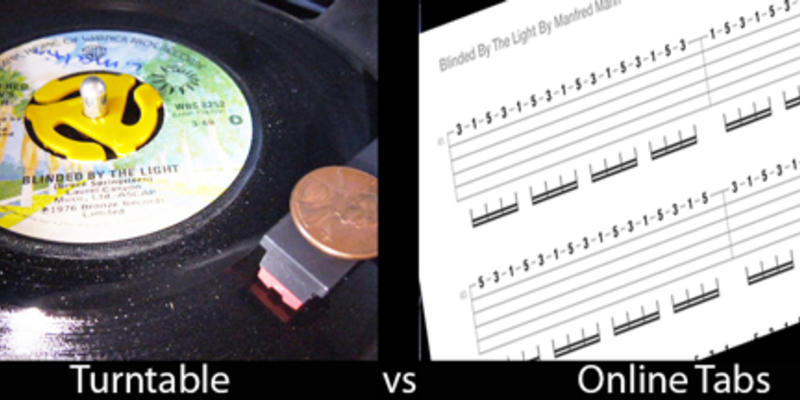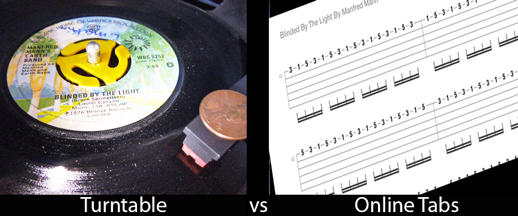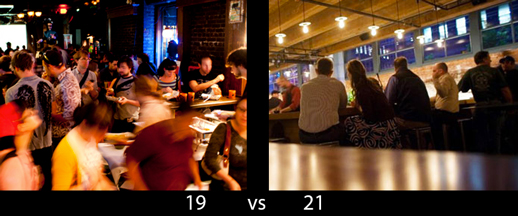
Last week, while in the middle of an 11-hour drive to a gig in my old hometown of Cleveland, I took stock of all I had in the car: three days of clothes, two bass guitars, an amp, guitar cables, two speaker cabinets, and three boxes of CDs.
That was all pretty standard inventory, and after doing hundreds of road trips for gigs, I was certain I hadn’t forgotten anything. Then I looked to my side and took note of my bag of nuts and raisins, a Fiber One bar, two bottles of fresh fruit juice, and a bottle of purified water. Something in my grocery selection made the Ghost of Tim Past rise up and smack the present me in the head. When I was making band road trips regularly 20–25 years ago, the items next to me would have been beef jerky, burnt gas station coffee, and a pack of Camel heavies.
Sometimes when we think we stay the same, we don’t notice how much changes.
Clearly, my health choices are much better now than back then. But what else has changed? I had hours and hours to think about this, and here are some of the things that are different now than when I started playing music.

1. Learning songs by vinyl records vs. online tabs and YouTube. When I first started to learn songs, the way we did it was to try to play along with the vinyl record. When you wanted to go over a section of the song again, you picked up the needle and put it back down where you hoped it would catch the vinyl groove in the right spot, and early enough in the section so you had time to grab your guitar again. If you had trouble with a lick or solo, you would turn the record player speed down, learn it slower and lower, then transpose. Today, you fire up your Tab app on your phone and don’t even have to read or hear the music. When you need more help these days, you can open up YouTube and find a video of someone demonstrating how they learned the song.

2. Directions: TripTik vs. GPS. When we planned a tour, or even one show in another state, we would head on up the local AAA office to sit down with a surly, bored, malodorous employee and tell her where we wanted to go. She would pull out a directory and begin to assemble a stack of pages that each represented a 50-or-so-mile stretch of our trip. She would then put them in order, bind them with a plastic ring, and proceed to mark the route with a highlighter, adding in “CONSTRUCTION” stamps wherever construction work was due to be in progress. We would also keep a giant Rand McNally Road Atlas in the van. In-dash nav systems and map apps on the phone eliminated the TripTik. Back when I started touring, if you got lost, you were lost. If you were in a strange area and your drummer wanted to go a to a girl’s apartment after a gig, you could forget meeting up early the next day. It wasn’t going to happen until he found his way back to you.
3. Contacting fans: Postcard vs. e-mail. Once one of my bands got pretty popular, managing the fan list became a part-time job. At every gig, we would have a fan mail sign-up sheet. After the weekend, one of us would type the names and addresses into a database. Mind you, these were names and addresses written by people who were drinking in a dark bar, so we would have to filter through the poor penmanship and attempts at humor (some Fletch fan kept writing in John Cocktosen or Mr. Poon). Then once a month, we would meet up to create, print, and cut a few thousand postcards announcing upcoming shows or news. We’d have to label them, stamp them, mail them, and hope there were no last-minute changes. It was time consuming and expensive. Today, you would create a Facebook event page and sent out e-mails. No real cost or time commitment.

4. Radio stations and tape decks vs. iPod. When you’re driving a 15-year-old, 200,000-mile van along the interstate, it would be nice if your tires were in good shape, but it was an emergency if the tape deck busted. To have the tape player not work, or have the same tape stuck in the deck for an entire week of driving, could make you go nuts. The other option was to listen to the radio from city to city, but you never knew what was a good station in each town, and by the time you’d lock on to one, you would be driving out of range. Then all you’d hear is another half hour of radio static while in search of a good signal. Today, some people have never heard radio static. Satellite radio and smart phones with a 6,000-song library have changed all that.

5. Drinking age: 19 vs 21. It was a whole lot easier to fill a bar when the drinking age was lower. And we were younger.
Of course, the biggest changes overall have to be the rise of the Internet and use of smart phones. On road trips today, you might have every band member on their device, communicating with the outside world. But 25 years ago, we only had each other. Our car phone was the payphone at a gas station.
It’s now easier to promote your band and communicate with the outside world, but it’s also easier for the other 600,000 bands to try to communicate with the same people. So in the end, it may be harder to get your music out.
Long ago, the process to record and release a decent CD, cassette, or vinyl was long and expensive. Today, professional-quality music can be created, finished, and delivered from a laptop.
There was a time when bands had to send material through mail, to have professional 8 x 10 glossy press photos printed. Once returned, we’d assemble them with our demo tape and band biography, and mail the package to bars or record labels. Now, you click “send.”
These were just a few of the differences I thought about. And I was able to speak my notes into my iPhone memo pad instead of trying to remember them until I got to rest stop and found a pen and paper. Another difference right there.
I might long for the days of driving our big blue van from gig to gig, but I’m not going to tell you which era was better.
A quote from a famous ancient philosopher comes to mind: “Life moves pretty fast. If you don’t stop and look around once in a while, you could miss it.”
When I arrived at my destination, the main gig scheduled for us was at the Euclid Tavern, a bar that was featured in the 1987 Joan Jett and Michael J. Fox movie Light Of Day. I had frequented the club back in the late 80s, and being there made me think more about the changes. Ghosts emerged from every corner. Echoes of the bands I’d seen in that room filled my ears. At times, the new paint and décor of the place morphed into the cracked and smoke-stained walls of my youth. I couldn’t believe the bathroom was actually useable. People arrived who I had not seen in years, including one of my former heroes, who had become a friend and is now a grandpa. He came out to see me in a venue I’d come to see him perform in during the late 80s.
The buildings up and down the street had all changed. The neighborhood was cleaner, but more sterile. I thought of old friends and relatives who had passed away, as new friends walked in to the club. Life moves pretty fast.
We took the stage at 12:30 a.m., and I was reminded about a few things that hadn’t changed in 25 years: Bands start too late. You can’t hide from mistakes on stage. And in the end, it’s all about the songs and the performance. More importantly, it’s about who you’re with.
Yup, there are a few things I might miss about the "old days," but after that weekend, I was glad to have my fruit juice, healthy nut bar, and satellite radio for the 11-hour drive back.